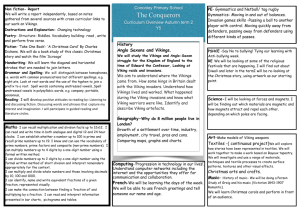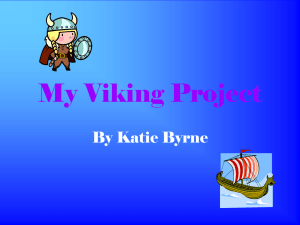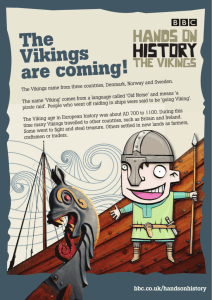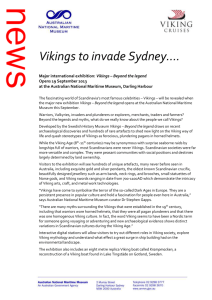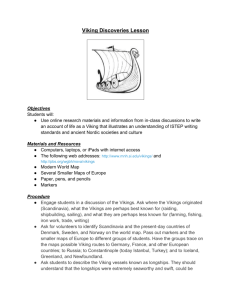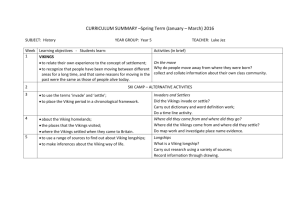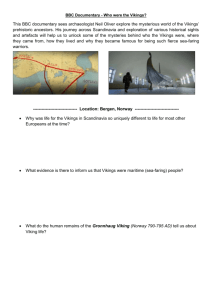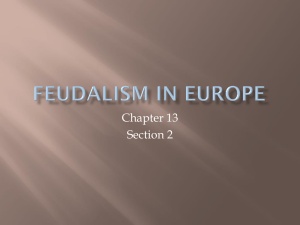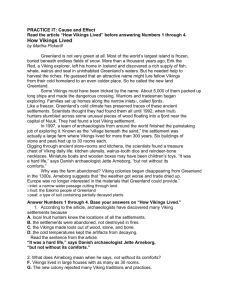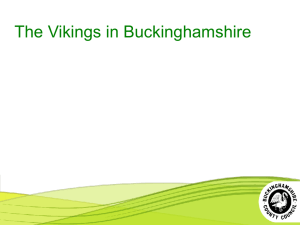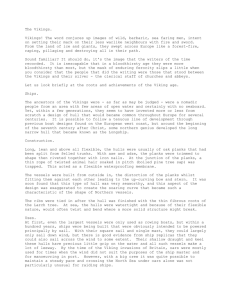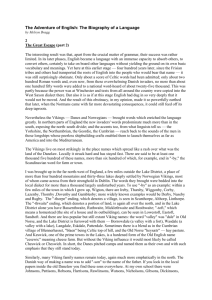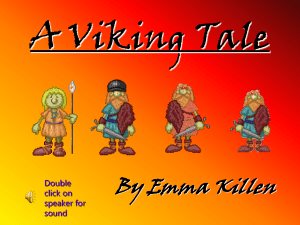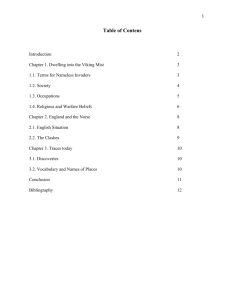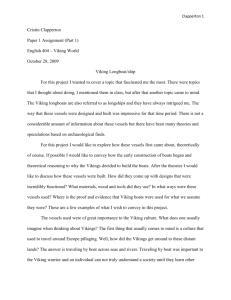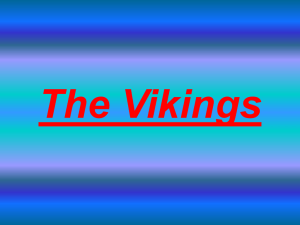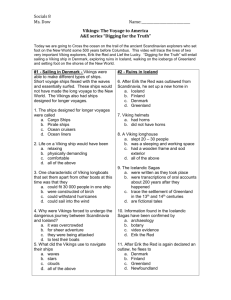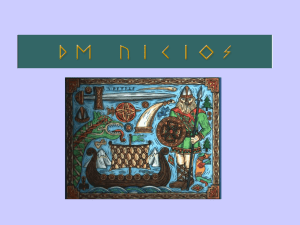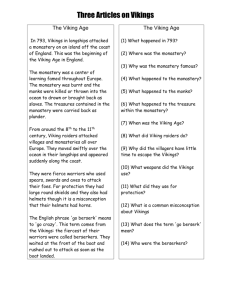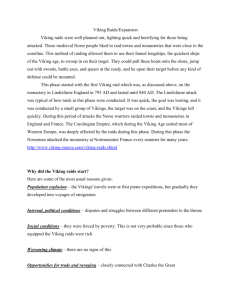the vikings - Ms Flynn`s 4th class website 2012
advertisement
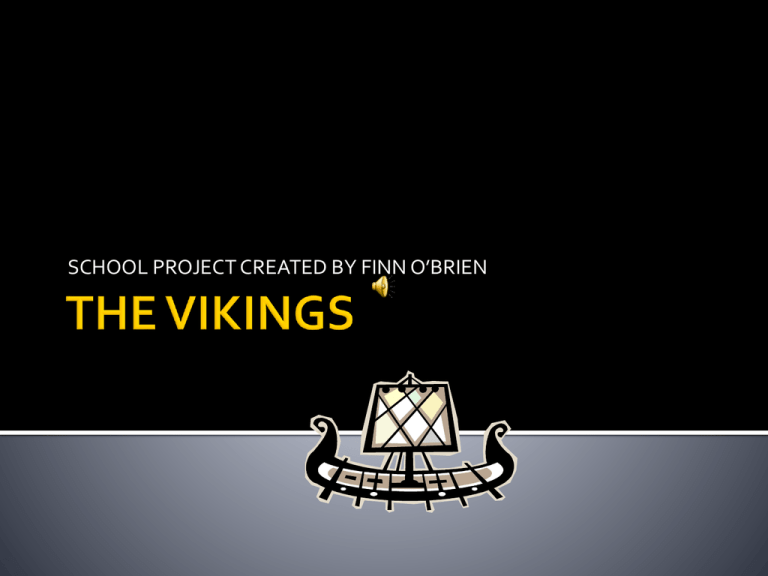
SCHOOL PROJECT CREATED BY FINN O’BRIEN I USED THE BBC WEBSITE TO GATHER ALL THE FACTS. Who the Vikings were Family life Vikings at sea and Viking riders Viking towns and homes Religion and legends Viking trade What happened to the Vikings? Where did the Vikings come from? The Vikings came from three countries of Scandinavia: Denmark, Norway and Sweden. The name 'Viking' comes from a language called 'Old Norse' and means 'a pirate raid'. People who went off raiding in ships were said to be 'going Viking'. Most Viking men were good handymen and some had special skills. There were boat-builders and potters, leather-workers and smiths. Most Viking men knew how to handle a boat. And most could fight if they had to, to protect the family. Women baked bread. They did spinning and weaving turning sheep wool into cloth. They looked after the children, made the family's clothes and cooked two meals a day. On the farm, women milked the cows and made cheese. Viking ships The Vikings built fast ships for wars. These ships were 'dragon-ships' or 'longships'. Viking longships could sail in shallow water. So they could travel up rivers as well as across the sea. In a raid, a ship could be hauled up on a beach. The Vikings could jump out and start fighting, and then run away if they were chased. The Vikings captured the northern English city of York in 866. Once the Roman stronghold of Eboracum, and later the capital of the English kingdom of Northumbria, it became Viking 'Jorvik'. Viking farmers settled on land around the city. Viking houses were built of wood, stone or blocks of turf. The houses were long boxshaped with sloping thatched or turf roofs. Most houses had just one room. Rich people's farmhouses might have a small entrance hall, a large main room, a kitchen, a bedroom and a store room. In a Viking town, houses were crowded close together along narrow street When the Vikings came to Britain, they had their own pagan religion. They worshipped many gods. The old stories they told about gods, giants and monsters are known as Norse myths. The Vikings traded all over Europe. They bought goods and materials such as silver, silk, spices, wine, jewellery, glass and pottery. They sold items such as honey, tin, wheat, wool, wood, iron, fur, leather, fish and walrus ivory. In the 10th century the English got back much of the land held by Vikings. In 954, they drove out Eric Bloodaxe, the last Viking king of Jorvik. After Eric was killed in battle, the Vikings in England agreed to be ruled by England's king. I hope you enjoyed my project. Thank you for your attention.

